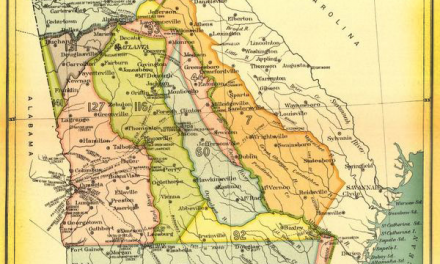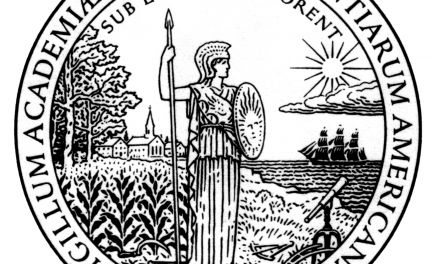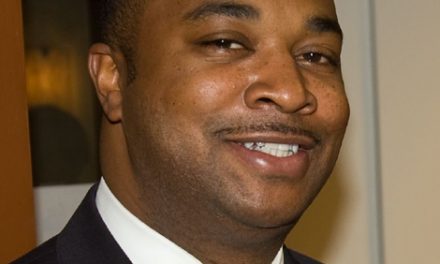At the Slavery and Disposession Symposium’s “The History of Oxford and Where We are Today” on Oct. 1 at Oxford College, Oxford Men of Color President Devin Gee (22Ox) and Black Student Alliance (BSA) President Sarah Bekele (22Ox) detailed how Emory’s racial legacy has affected them and other students of color. Around 60 faculty members, students and alumni attended the event.
Oxford College Dean Douglas Hicks began the event by addressing Emory’s history of slavery, racism and the dispossesion of Native and Indigenous land. Hicks discussed how most Oxford staff and trustees owned enslaved people in antebellum Georgia and were deeply involved in the institution of slavery.
“This conference is about continuing to acknowledge and understand [Emory’s] shameful history,” Hicks said. “Only by fully naming the institution’s past actions and attitudes can we continue to strive toward fully embracing justice, equality and inclusivity.”
The Board of Trustees released a formal Statement of Regret in 2011, acknowledging the University’s “entwinement with the institution of slavery throughout the College’s early history.” In the time since, both Bekele and Gee have noted an abundance of acknowledgement and regret but not enough tangible action. Gee recalled seeing the Confederate statue in Covington Square with its plaque that reads “The Confederate dead of Newton County” during his first year move-in.
“Like a lot of other mothers on move-in day, [my mother] was very concerned about where she was leaving her Black son,” Gee said. “Having to tell her that I am in an area with a presence of the Confederacy was really difficult. I started questioning both my place within this University and whether the University itself reflected on how students are encountering Confederate memorabilia so close to its campus.”
Similarly, Bekele encountered the Oxford’s Confederate ties during her first few days on campus. In an initial tour of Oxford guided by her resident advisor (RA), Bekele remembers how her RA offhandedly remarked “and over there is the Confederate graveyard” when passing by the nature trail behind Williams Gymnasium.
Like Gee, Bekele said she was left to put the puzzle pieces together herself.
“There should have been a little bit more of an explanation as to what she was referring to, but I don’t think it is [the RA’s] place either to recite the entire history of Emory’s campus to me,” Bekele said.
Oxford College is also home to Kitty’s Cottage, a house built in the pre-Civil War era that was named after its first resident, Catherine Andrew Boyd. In the mid-1800s, Boyd was enslaved by Methodist Bishop James Osgood Andrew, who was also the first chair of Emory’s Board of Trustees.
However, Bekele said the plaque outside of the cottage designed to give students an idea of its historical significance “spins the narrative in a way that romanticizes slavery.”
The plaque states that Boyd was freed and did not wish to return to Africa, but instead preferred to stay in Oxford. Gee, who also came across this historical artifact within his first week on campus, recalls how it prompted him to question the University’s intentions regarding its controversial history.
In light of their own experiences, Bekele and Gee said they conducted a survey in 2020 to determine if other students felt similarly.
“We wanted to gauge how aware people were of these physical monuments and any thoughts or reflections students had about Emory’s history and legacy,” Gee said.
Mainly taken by student members of BSA, the survey found there was an “overwhelming consensus” that students were dissatisfied with the way Emory handled this history.
“Many Emory students were learning about it through their own investigations and conversations with other students,” Gee said.

The word map created out of the most-commonly-used words by respondents in the 2020 survey of Black Student Alliance members’ experiences (courtesy Sarah Bekele (22Ox) and Devin Gee (22Ox))
The most frequently used words among respondent’s answers included “slavery” and “Confederacy,” as well as emotions such as “uncomfortable” and “uneasy.” Austin Barnes (22Ox) echoed Bekele’s and Gee’s sentiments, describing how “Oxford’s diversity gap and Confederate history made [him] feel secluded and unrecognized.”
Despite Oxford’s history and entanglement in the institution of slavery, the panelists said there is hope for progress. Gee said that Oxford’s two-year structure gives sophomores “more power to make changes.”
“While we can’t change Emory’s history, we can improve its legacy,” Barnes said.
Nonetheless, students said they have grappled with an abundance of coexisting fears and suspicions. Bekele, for example, said she worries that tokenism influences some of Oxford’s responses to its history of slavery and racism.
“After I leave, Emory is just going to find another little Black girl to fill in for me,” Bekele said.
Gee said the symposium helped bring to light some tangible, restorative initiatives that Oxford hopes to begin in the near future, the most prominent being more support for the communities surrounding Oxford’s campus.
“Many high schools in the area do not have the best graduation rates or college-readiness,” Gee said. “Oxford is a higher education institution, but the high schools surrounding us are not best preparing their students to actually come to places like Emory. We can give all the scholarships we want to people in the surrounding areas, but if they get here and aren’t able to actually thrive here, what does that mean?”
Gee said that while he still worries about Oxford’s inaction in the past, he has hope for the future following the symposium.
“The same promises for scholarships, memorials and a lot of the same things we are talking about now were made all the way back in 2011 and nothing ever happened with those promises,” Gee said. “It sounds like people are more supportive and taking this way more seriously, so we can only hope that changes will be made.”






